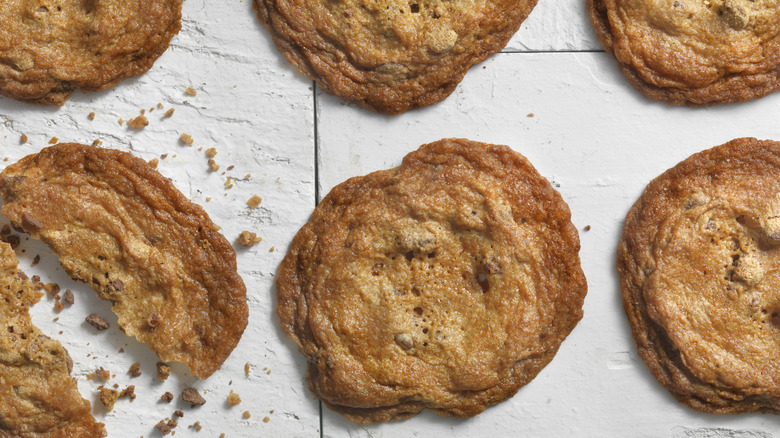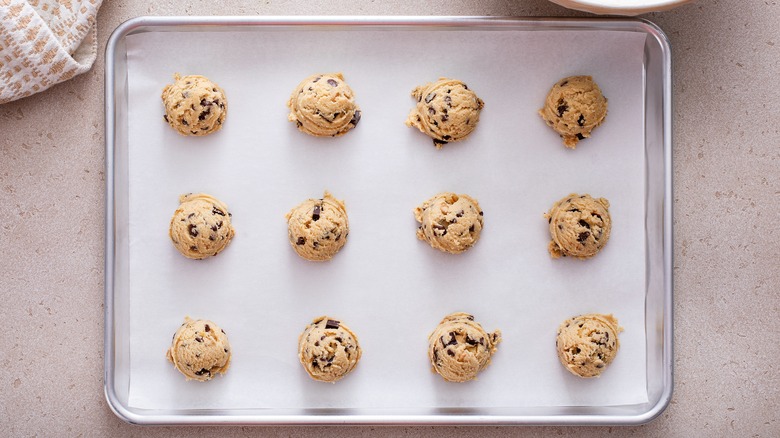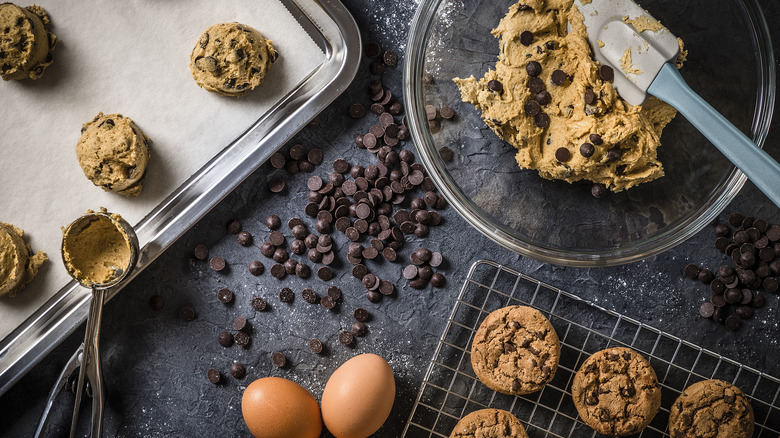The Step You Should Skip For Achieving The Crispiest Cookies
Cookie aficionados typically fall into one of two categories: those who crave soft, fluffy cookies, and those who prefer them thin and crisp. With a few small tweaks in ingredients and preparation techniques, any basic cookie recipe can be modified to become tender and chewy, or delightfully crunchy.
One of the most important ingredients in any cookie recipe is room-temperature butter (in fact, you might even want to take your butter's temperature before beginning to ensure you end up with a perfect bake). This is crucial regardless of the style of cookie you aim to achieve because it helps your dough come together into a smooth and uniform consistency. However, even after allowing your butter to soften and mixing together all your cookie ingredients, some recipes call for an additional time-consuming step: refrigerating the dough before proceeding to re-harden the butter.
When a cookie craving strikes, there's nothing worse than having to wait an hour — or even up to 24 hours — to bake the batch. The good news is, this step can be skipped if you're on team crisp cookies since softer butter will spread out more in the oven, and contribute to that golden-brown snap. Plus, the results will be perfect for dunking into a glass of milk for a nostalgic snack.
How refrigeration affects cookie dough
When baking a batch of cookies, sticks of butter need to be softened to properly incorporate with the other ingredients. For the most flavorful results, the best kind of butter for making cookies is European style, because its higher fat content achieves superior outcomes when creamed with sugar.
Many recipes then call for the dough to be refrigerated to allow the butter to firm up again before baking. This extra step is suggested to prevent the cookies from spreading, and to keep them round and tall. However, if your goal is the opposite, shaping and baking cookies immediately after preparing the dough will encourage them to spread out in the oven, resulting in more surface area for browning.
The downside to baking the dough right away is misshapen cookies. To help them return to a perfectly spherical form, simply use a biscuit cutter for the roundest cookies ever. While they are fresh from the oven and still warm, place a biscuit cutter over each cookie, and use a circular motion to encourage the uneven edges to push back into place. Even if you don't have a biscuit cutter of the correct size, an inverted glass works just as well.
Other ways to achieve cookies with a snap
Other adjustments can be made to a recipe for crisp results. First, take a look at the ratio of white granulated sugar to brown sugar in the ingredient list. The molasses in brown sugar keeps your dough moist, which results in softer cookies. Using more white sugar, or even substituting some liquid corn syrup, will encourage the dough to spread and crisp while baking.
Another easy trick is to flatten the dough both before and after baking. Using the palm of your hand or the bottom of a glass to press down the spoonfuls of dough on the cookie sheet accelerates the expansion process during baking. Then, immediately after removing them from the oven, give the tray a few firm taps on the countertop. This action causes the dough to spread out evenly while it's still slightly malleable from the oven's warmth. Allow the cookies to sit on the baking sheet for a couple of minutes before transferring them to a wire rack to cool completely.



